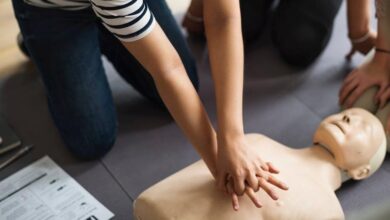Bridging the Gap: When You Pass Your Boards, Have You Truly Saved a Life? Why CPR Skills Matter Post-Licensure
You’ve aced your exams, celebrated the long-awaited letter of success, and officially earned your medical license. After months (or years) of intense preparation—hours spent poring over physiology notes, memorizing drug interactions, and acing every USMLE practice test—you’re finally a certified healthcare professional. But pause for a moment and ask yourself a deeper question: Have you truly saved a life yet?
The transition from student to practitioner often feels like crossing a finish line, yet in truth, it’s only the beginning of a lifelong race—one where knowledge must meet real-world action. And few skills embody that connection more profoundly than cardiopulmonary resuscitation (CPR). Beyond the licenses, credentials, and diplomas, the ability to perform CPR is what can turn your expertise into immediate, life-saving impact.
This is the bridge between passing your boards and being ready to save a life.
1. The Paradox of Modern Medical Education
Modern medicine is rigorous. Aspiring physicians spend years mastering anatomy, pathology, and pharmacology. Passing the USMLE or other licensing boards is a testament to dedication and intellectual endurance. Those endless USMLE practice test sessions train the mind to recognize subtle patterns of disease and clinical logic—skills that are essential for safe practice.
However, there’s a paradox: while these exams measure cognitive readiness, they don’t always assess hands-on, split-second decision-making under pressure. When a patient’s heart stops, theoretical knowledge alone won’t suffice. In those moments, it’s your ability to act, not just analyze, that determines whether someone lives or dies.
That’s where CPR certification comes in—a practical, universally relevant skill that transforms clinicians from diagnosticians into responders.
2. The Real Definition of “Readiness”
Passing your licensing exams signifies that you’re ready to enter the medical field. But “readiness” in healthcare extends far beyond intellectual preparation—it includes emotional composure, technical confidence, and the ability to act swiftly in emergencies.
CPR certification bridges this readiness gap by teaching clinicians how to translate cognitive knowledge into immediate, effective action. It ensures that when the unexpected happens—in a clinic, on a ward, or even in public—you won’t freeze under pressure. You’ll move with trained precision.
In fact, studies show that immediate CPR can double or triple survival rates after cardiac arrest. These aren’t abstract numbers—they’re lives that hinge on competence and calmness in critical seconds.
3. Why Passing Boards Isn’t the End of Learning
The USMLE practice test experience builds endurance, problem-solving, and medical insight, but medicine doesn’t stop evolving once the exam is over. The human body remains unpredictable, and emergencies seldom follow textbook patterns.
Many clinicians discover this the hard way—when confronted with their first real resuscitation scenario post-licensure. The adrenaline surge, the urgency, the crowd of onlookers, and the sound of a flatline on a monitor can quickly overwhelm even seasoned professionals if they’re not practiced in emergency response.
CPR certification offers not only the mechanical skillset but also the confidence to navigate those intense moments. It refreshes procedural muscle memory and prepares clinicians to make rapid, life-saving interventions that go beyond theoretical competence.
4. The Power of Action Over Intention
Healthcare education often emphasizes precision—making the correct diagnosis, selecting the right medication, following the right protocol. Yet, the most crucial element of saving a life is action.
When someone collapses due to cardiac arrest, every second counts. The brain can begin to suffer irreversible damage within 4–6 minutes without oxygen. In that moment, a clinician’s ability to recall a pharmacologic algorithm means little compared to their ability to perform effective chest compressions and maintain circulation until help arrives.
That’s why CPR certification is more than a requirement—it’s an ethical responsibility. It transforms good intentions into tangible outcomes. It ensures that when knowledge meets crisis, action follows instinctively.
5. CPR: The Equalizer Across Medical Professions
Whether you’re a surgeon, pharmacist, nurse, or physician assistant, emergencies don’t discriminate by title. Every clinician, regardless of specialty, needs to be ready for the unthinkable.
A cardiac arrest can occur anywhere—a hospital cafeteria, an outpatient clinic, or even during a home visit. Your ability to respond effectively depends not on your score on the USMLE practice test, but on your preparedness through CPR training.
The beauty of CPR certification is its universality. It gives every healthcare worker—regardless of field or rank—the power to save a life. It’s one of the few skills that transcends medical hierarchies and unites professionals in their shared mission: preserving human life.
6. The Emotional Impact of Real-World Saving
Ask any clinician who has performed successful CPR, and they’ll tell you it’s a transformative moment. It’s not the same as diagnosing a condition or prescribing treatment. It’s raw, immediate, and profoundly human.
The first time you restore a heartbeat, the weight of your education, your exams, and your late nights suddenly feels worth it. The moment is electric—a reminder that medicine isn’t just about understanding disease but restoring life.
Passing your boards proves your intellectual readiness; performing CPR proves your human readiness. It’s the point where knowledge and compassion meet action.
7. Post-Licensure: Continuous Growth Beyond the Exam
After passing your boards, it’s easy to feel as though the major milestones are behind you. But medicine is dynamic, and excellence demands constant renewal.
CPR certification courses serve as a reminder that learning never stops. They reinforce teamwork, communication, and confidence in crisis—skills that benefit every clinical encounter. Many certification programs now offer blended learning options, allowing clinicians to review theory online and then practice compressions and rescue breathing in realistic simulations.
This hands-on reinforcement is invaluable. It’s one thing to know that chest compressions should be at a depth of two inches; it’s another to feel that rhythm, pressure, and speed in real time.
8. The Ethical Imperative: Beyond Compliance
Hospitals and clinics often require CPR certification for compliance, but the true motivation should be ethical rather than procedural. Every clinician should carry the readiness to act, not because it’s mandated, but because it’s right.
After all, medicine is rooted in service. When you encounter a person in distress—inside or outside the clinical setting—your ability to step in reflects the core of what it means to be a healer.
Being licensed proves your competence. Being CPR-trained proves your commitment.
9. From Knowledge to Lifesaving Impact
Let’s revisit the question: When you pass your boards, have you truly saved a life?
Technically, not yet. But when you commit to continuous growth, seek CPR certification, and stay ready to act in emergencies, you bridge the gap between theory and impact.
Passing the USMLE practice test builds your foundation; performing CPR builds your legacy. One measures your potential, the other fulfills it. Together, they form the complete picture of what it means to be a clinician—intellectually sharp, emotionally grounded, and physically prepared.
10. Conclusion: The True Measure of Readiness
Earning your license is a proud moment. It proves your perseverance, intelligence, and dedication. But real readiness—true medical mastery—comes from the willingness to continue learning and to act when it matters most.
CPR certification is that bridge between academic excellence and real-world compassion. It reminds every clinician that behind every test question, diagnosis, and protocol lies a heartbeat that may one day depend on your hands.
So yes, passing your boards is an incredible achievement. But when you learn to perform CPR, when you restore a pulse, and when you give someone another chance at life—that’s when you’ve truly become a healer.



